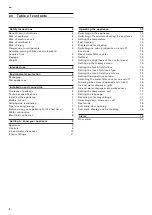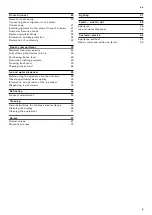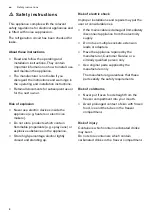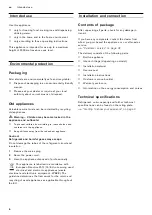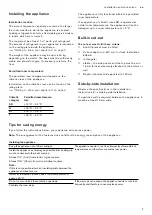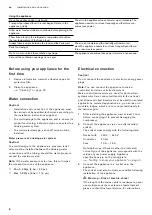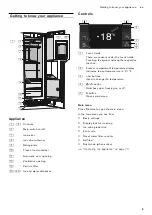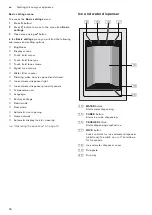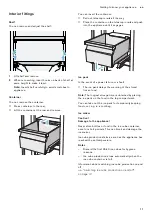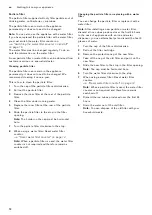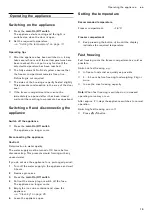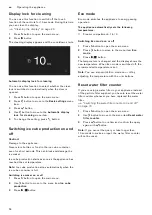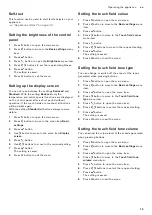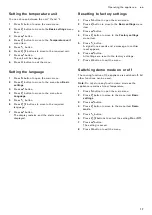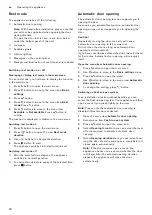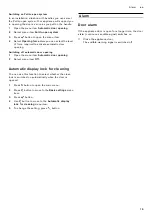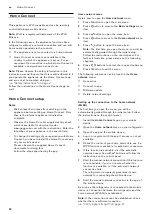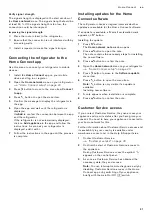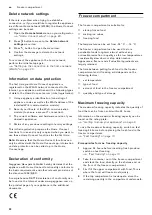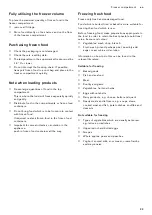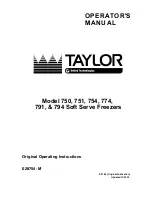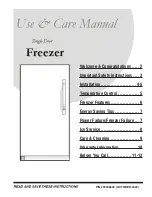
8
en
Installation and connection
--------
Before using your appliance for the
first time
1
Remove information material, adhesive tape and
protective film.
2
Clean the appliance.
Water connection
Caution!
–
Installation and connection of the appliance must
be carried out by qualified technicians according to
the installation instructions supplied.
–
To avoid damage to the appliance and to ensure its
proper functioning, it should only be connected to a
drinking water system.
–
To avoid water damage, a shut-off valve must be
installed.
Water pressure of drinking water system
Caution!
To avoid damage to the appliance, a pressure relief
valve must be installed between the drinking water
connection and the tubing, should the water pressure
exceed the maximum value.
Note:
If the water pressure is too low, this will impair
the relevant functions of the appliance.
▯
Min. 0.2 Mpa (2 bar / 29 psi)
▯
Max. 0.8 Mpa (8 bar / 116 psi)
Electrical connection
Caution!
Do not connect the appliance to electronic energy saver
plugs.
Note:
You can connect the appliance to mains-
controlled and sine-controlled inverters.
Mains-controlled inverters are used for photovoltaic
systems which are connected directly to the national
grid. Sine-controlled inverters must be used for isolated
applications. Isolated applications, e.g. on ships or in
mountain lodges, which are not connected directly to
the national grid.
1
After installing the appliance, wait at least 1 hour
before connecting it to prevent damaging the
compressor.
2
Connect the appliance via a correctly installed
socket.
The socket must comply with the following data:
Outside Europe: Check whether the indicated
current type of the appliance corresponds with the
values of your power supply. Appliance
specifications are on the rating plate.
"Getting to know your appliance" on page 9
3
Connect the appliance to a socket near the
appliance.
The socket must also be freely accessible following
installation of the appliance.
m
Warning – Risk of electric shock!
If the length of the mains cable is inadequate, never
use multiple sockets or extension leads.Instead,
please contact Customer Service for alternatives.
Using the appliance
Open the appliance door only briefly.
The air in the appliance does not warm up so intensely. The
appliance needs to cool less frequently and therefore con-
sumes less power.
Transport purchased food in a cool bag and place in the
appliance quickly.
Allow warm food and drink to cool down before placing in the
appliance.
Thaw frozen food in the refrigerator compartment to utilise
the low temperature of the frozen food.
Always leave a space between the food and the back wall.
The air can circulate and the humidity will remain con-
stant.The appliance needs to cool less frequently and there-
fore consumes less power.
Pack food airtight.
Do not cover or block the ventilation openings.
The appliance consumes less power if warm air can escape.
Vacuum the ventilation openings once a year.
Socket with
220 V ... 240 V
Conductor
50 Hz
Fuse
10 A ... 16 A


